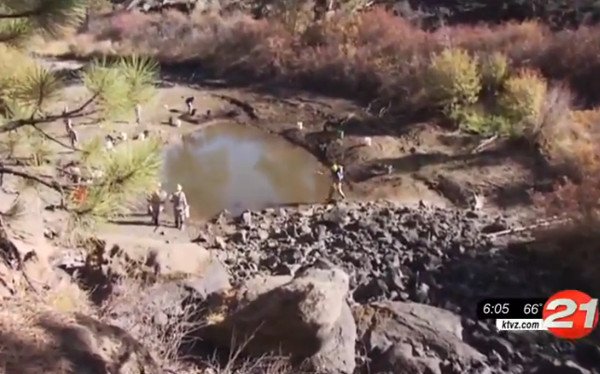
In the struggle between water and fish in Central Oregon, fish are losing out for the sake of agriculture.
For the past three years, wildlife officials have moved to relocate fish that are threatened from dying because water levels on the Deschutes River have gotten so low.
It seems the local water management district has been limiting Deschutes River flows to just 2 percent of its natural levels. That’s because they are saving water in reservoirs for next year’s harvest.
But those reservoirs are already low so instead of dropping flows on Central Oregon’s most vital waterway over a three week period in October, this year they did it in just 10 days. The results were that wildlife officials had to act fast. And in some cases they weren’t fast enough.
When the flows on the Deschutes get so low, side channels and oxbows cut cut off creating pools that eventually dry up or run out of oxygen for the fish to survive.
While crews managed to save 7,000 trout, whitefish and sculpin, there were still hundreds of dead and dying fish in pools that had nearly completely run dry, according to the KTVZ NewsChannel 21, which reported from the scene.
“It’s disappointing,” said volunteer Gabe Parr told the newspaper. “It’s disappointing, knowing that it can be prevented and that we’re smarter than this.”
The practice of diverting the river is not without controversy. Lawsuits are pending to stop the Central Oregon Irrigation District from doing it again. General Manager Craig Horrell told NewsChannel 21 that his office was dedicated to finding an issue.
“What we’re doing is not a long-term solution,” said district fish biologist Erik Moberly, according to the local news. “The Deschutes is currently managed for irrigation. They want to hold water back for the next irrigation season — and the fish lose.”








